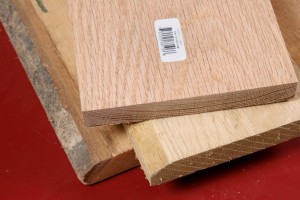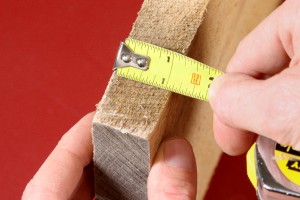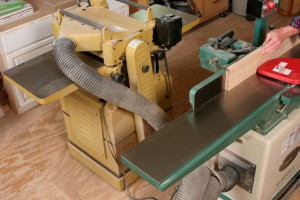
When I started woodworking, and my tool budget was really lean, I bought my boards from the home center. It seemed logical to shop there. They were already surfaced, and that was necessary because I didn’t have a jointer and planer. Plus, I could see the knots, pitch pockets and splits easily, which gave me some confidence that I was finding the best of what was available.
I’d dig through the stack looking for the straight stuff. Usually I could find a few good pieces. If I couldn’t, I’d settle for less and live with some twisting and cupping. I didn’t like it, but what could I do? Even then I knew I was spending too much money on that wood. And, I was.
If this how you’re buying wood, I can totally understand your predicament. But let me share some numbers I jotted down recently while shopping for lumber to help argue a point: it pays to explore your options for buying material. Even if that means you need to break down and get a jointer and planer sooner than you’d like to.

Right now, 1×6 red oak is selling for $2.86 per lineal foot at my local Big Orange Retail Giant. That translates to $5.72 per board boot, according to my math. It’s exactly 3/4 in. thick, surfaced on all sides. If it distorts, there’s nothing extra to plane away to flatten it. You get what you get.
On the other hand, a local sawmill is selling kiln-dried 4/4 red oak for $2.20 per board foot. It’s roughsawn and still 15/16 in. thick after drying, which gives me almost a quarter inch of extra thickness for surfacing. And, it’s less than half the price of what the home center is charging. It’s also locally grown and harvested, so a fairly “green” product these days. I can feel good about that.
Another woodworking retailer in my area is selling 5/4 red oak for $3.37 per board foot. That stock is surfaced on both faces and ripped straight on one edge. It’s about 1 1/8 in. thick and still 40% cheaper per board foot than the home center’s 1x.

A tough recession is the least opportune time to dump your savings into machinery, I know. But you will save money in the long run, especially if you buy quality tools. And, you’ll finally take control over flat, straight and square. That sure pays dividends to your projects.
Catch you in the shop,
Chris Marshall, Field Editor





